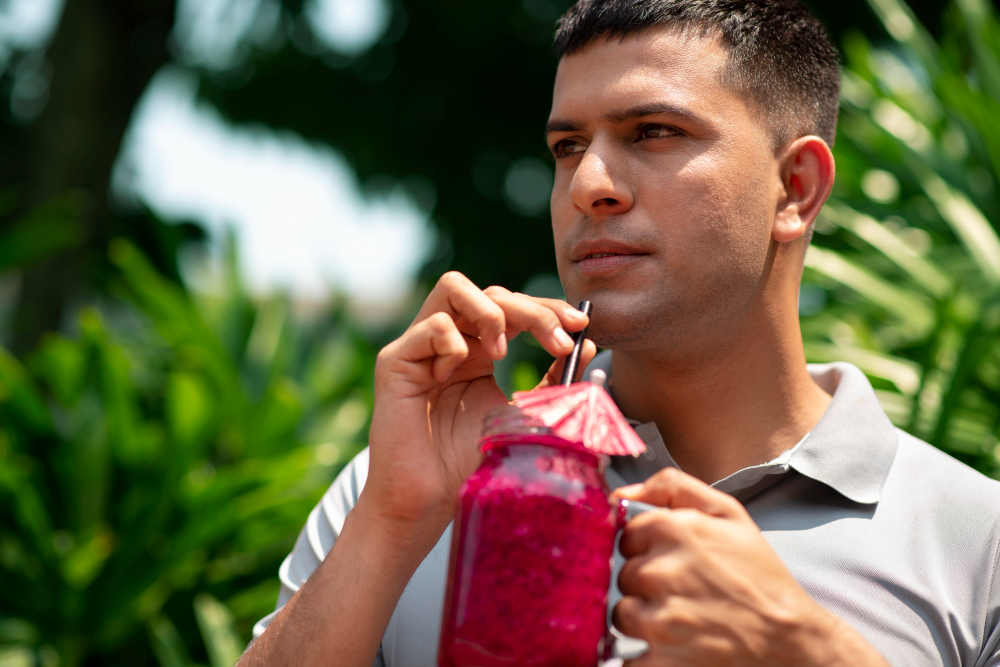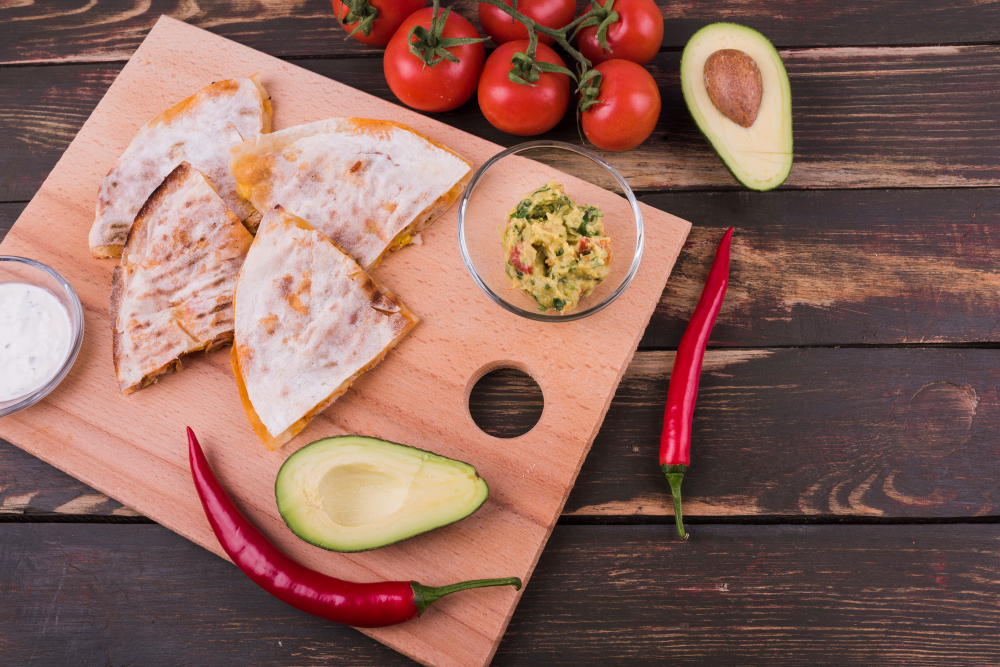Food And Drinks
What is Old World Pepperoni? A Comprehensive Guide

Introduction to Old World Pepperoni
Old World pepperoni is a unique and flavorful version of the pepperoni most people are familiar with. It’s characterized by its bold taste, natural casing, and distinctive “cupping” effect, where the edges curl up when cooked. Unlike its more common counterpart, which is often flat and uniform in texture, Old Worldpepperoni has a rich history, deeper flavor, and has recently been making a resurgence in artisanal pizzerias. But what makes it so special?
The Origin and History of Pepperoni
A Brief History of Pepperoni in America
Pepperoni as we know it was developed by Italian immigrants in the United States. The pepperoni commonly used in the U.S. is not a traditional Italian product but was born out of the melding of Italian curing techniques and American ingredients. In the early 20th century, pepperoni began to gain traction as a pizza topping, eventually becoming a staple.
Origins of Old World Pepperoni
Old Worldpepperoni, on the other hand, hearkens back to traditional Italian sausage-making techniques. It uses natural casings, giving it that signature curl when baked. This style of pepperoni is closer to the original Italian cured meats, focusing more on robust, spicy flavors and artisanal methods.
Differences Between Old World and Regular Pepperoni
Casing
One of the key differences between Old World and regular pepperoni lies in the casing. Old Worldpepperoni is made with natural casings, which allows the pepperoni to curl up and form a crispy edge when baked. Regular pepperoni typically uses synthetic casings, resulting in flat slices.
Seasoning
Old Worldpepperoni tends to be spicier and more flavorful, using a variety of robust spices like paprika, chili flakes, and fennel. In contrast, modern pepperoni often has a milder flavor.
Cooking Methods
Old Worldpepperoni is often cooked in a way that promotes “cupping” and slight charring, adding texture and flavor, while regular pepperoni remains flat and doesn’t develop the same level of crispiness.
The Art of Cupping and Charring
One of the defining characteristics of Old Worldpepperoni is the way it curls up during cooking. This phenomenon, known as “cupping,” occurs because of the natural casing and the way the fat renders out of the meat. The edges of the pepperoni become crispy, and the cup holds the oil, creating a burst of flavor in each bite.
The slight charring on the edges adds a layer of smoky complexity to the flavor profile, making each slice a delightful combination of crisp, spicy, and savory.
Flavor Profile of Old World Pepperoni
Old Worldpepperoni boasts a more intense flavor than its modern counterpart. The spices, including black pepper, garlic, and paprika, combine to create a rich, smoky, and slightly spicy taste. The natural casing also adds a unique texture, offering a satisfying snap with each bite.
Production Process of Old World Pepperoni
Old Worldpepperoni is made using traditional methods that include fermentation and drying. This process gives the pepperoni its distinct tanginess and depth of flavor. The use of natural casings, along with time-honored curing methods, sets it apart from the mass-produced pepperoni found in most supermarkets.
How to Spot Old World Pepperoni on Pizza
Visually, Old Worldpepperoni is easy to recognize. When baked, the slices curl up into little cups, often with crispy, charred edges. The centers of these cups hold small pools of oil, which enhance the flavor and texture. In contrast, regular pepperoni stays flat and uniform.
Old World Pepperoni in Pizza Making
This style of pepperoni is particularly well-suited for artisan pizzas with thin, crispy crusts. Its bold flavor pairs perfectly with tangy tomato sauces and rich mozzarella. Some pizza makers also use Old Worldpepperoni alongside other premium ingredients, such as fresh basil or burrata, to create a gourmet experience.
Why is Old World Pepperoni More Expensive?
The production of Old Worldpepperoni is more time-consuming and costly due to the use of natural ingredients and artisanal methods. The fermentation process, high-quality meats, and spices all contribute to a higher price point compared to regular pepperoni.
The Rising Popularity of Old World Pepperoni
In recent years, the demand for Old Worldpepperoni has grown significantly, especially among food enthusiasts and pizza lovers. Many pizzerias now offer it as a premium topping, and social media has played a significant role in promoting its appeal.
Informative Chart: Comparison Between Old World and Regular Pepperoni
| Feature | Old World Pepperoni | Regular Pepperoni |
|---|---|---|
| Casing | Natural casing | Synthetic casing |
| Flavor | Bold, spicy, smoky | Mild, less intense |
| Texture | Crispy, curled edges | Flat, uniform texture |
| Cooking Style | Cupping, charring | Stays flat |
| Ingredients | Traditional spices, premium meats | Standard spices, processed meats |
| Cost | More expensive | Less expensive |
| Popularity | Rising among enthusiasts | Common on most pizzas |
Conclusion: The Appeal of Old World Pepperoni
Old World pepperoni has brought a new dimension to the pizza experience. Its intense flavor, unique texture, and artisanal production methods make it a standout choice for those looking to elevate their pizza game. While it may come at a higher cost, the rich taste and nostalgic appeal of Old Worldpepperoni are well worth it.
FAQs
- What makes Old Worldpepperoni curl?
- The natural casing and the rendering of fat cause Old World pepperoni to curl into cups when cooked.
- Is Old World pepperoni spicier than regular pepperoni?
- Yes, Old Worldpepperoni typically has a spicier and bolder flavor due to the use of traditional spices like paprika and black pepper.
- Can I use Old Worldpepperoni in dishes other than pizza?
- Absolutely! It works well in sandwiches, charcuterie boards, and even pasta dishes.
- Why is Old Worldpepperoni more expensive?
- The higher cost is due to the use of premium ingredients, natural casings, and traditional production methods.
- Where can I buy Old World pepperoni?
- You can find it in specialty grocery stores or order it online from artisanal meat producers.
Food And Drinks
Drink Ital: The Rastafarian Path to Natural Living and Wellness

Ever wondered how a simple shift in what you drink could transform your health and spirituality?
For Rastafarians, Ital is more than just a diet—it’s a sacred way of life. Rooted in the belief that the body is a temple, Ital living emphasizes natural, unprocessed foods and drinks that nourish both the body and soul. If you’re curious about how to “drink Ital” and harness its benefits, this guide will walk you through its principles, health perks, and practical ways to incorporate it into your daily routine.
What Does “Drink Ital” Mean?
Ital (derived from “vital”) is a cornerstone of Rastafarian culture, promoting purity, natural living, and a deep connection to the Earth. When it comes to drinking Ital, the focus is on:
✔ Pure, chemical-free beverages
✔ No artificial additives or processed sugars
✔ Herbal teas, fresh juices, and coconut water
✔ Avoiding alcohol, caffeine, and dairy
This lifestyle isn’t just for Rastafarians—anyone seeking cleaner, more mindful consumption can benefit.
Why Drink Ital? Health Benefits Backed by Science
1. Boosts Digestion and Gut Health
Ital drinks like ginger tea, peppermint tea, and fresh coconut water support digestion and reduce bloating. Studies show that herbal teas can aid in gut motility and reduce inflammation (Journal of Gastroenterology, 2020).
2. Enhances Hydration Naturally
Unlike sodas or energy drinks, Ital beverages (like hibiscus tea or aloe vera juice) hydrate without artificial sweeteners. Coconut water, a staple in Ital living, is rich in electrolytes—perfect for post-workout recovery (Nutrition Reviews, 2019).
3. Reduces Toxins in the Body
By avoiding alcohol, caffeine, and processed drinks, Ital living helps detoxify the liver and kidneys. Dandelion root tea, for example, is known for its liver-cleansing properties (National Institutes of Health, 2021).
4. Supports Mental Clarity and Spiritual Connection
Rastafarians believe that clean eating and drinking enhance livity (life force). Herbal infusions like chamomile and lemongrass promote relaxation and mindfulness, aligning with Ital’s spiritual principles.
How to Drink Ital: 5 Simple Swaps for Everyday Life
You don’t have to fully adopt Rastafarian practices to benefit from Ital drinking. Here are easy ways to start:
1. Replace Coffee with Herbal Teas
Instead of caffeine-loaded coffee, try:
-
Moringa tea (energizing, high in antioxidants)
-
Rooibos tea (naturally sweet, caffeine-free)
-
Turmeric-ginger tea (anti-inflammatory)
2. Ditch Soda for Fresh Juices & Infusions
Swap sugary sodas for:
-
Homemade ginger-lemonade (supports immunity)
-
Hibiscus iced tea (lowers blood pressure)
-
Watermelon juice (hydrating and refreshing)
3. Choose Coconut Water Over Sports Drinks
For natural electrolytes, opt for fresh coconut water instead of Gatorade. It’s lower in sugar and packed with potassium.
4. Avoid Alcohol with Herbal Alternatives
Instead of beer or cocktails, try:
-
Kombucha (fermented, gut-friendly)
-
Soursop leaf tea (calming, supports sleep)
-
Non-alcoholic ginger beer (spicy and refreshing)
5. Sweeten Naturally, Not Artificially
Skip refined sugar and use:
-
Raw honey (antibacterial)
-
Maple syrup (mineral-rich)
-
Dates (blended into smoothies for sweetness)
Real-World Examples: How People Are Embracing Ital Drinking
-
Reggae Artists & Wellness Advocates – Artists like Protoje and Jah9 promote Ital living through music and lifestyle choices, inspiring fans to adopt healthier habits.
-
Vegan Cafés & Juice Bars – From Kingston to Brooklyn, Ital-inspired spots serve fresh juices, herbal tonics, and plant-based elixirs.
-
Everyday Health Seekers – Many are turning to Ital drinks as a way to reduce processed food intake and improve well-being.
Final Thoughts: Is Drinking Ital Right for You?
Drinking Ital isn’t about strict rules—it’s about making mindful choices that honor your body. Whether you’re looking to detox, boost energy, or simply explore a more natural lifestyle, small changes can make a big difference.
Ready to try? Start with one Ital swap this week—maybe a herbal tea instead of coffee or coconut water instead of soda. Notice how your body responds. Over time, these shifts can lead to lasting vitality.
“Let food be thy medicine and medicine be thy food.” – Hippocrates (a philosophy deeply aligned with Ital living).
Food And Drinks
The Whole Grain Quesadilla with Chicken, Tomato, and Lettuce

Ever crave a quick, healthy meal that doesn’t skimp on flavor? Look no further than this whole grain quesadilla with chicken, tomato, and lettuce—a protein-packed, fiber-rich twist on a Mexican classic. Perfect for busy weeknights, post-workout fuel, or a satisfying lunch, this dish balances nutrition and taste effortlessly.
In this guide, you’ll discover:
✅ Why whole grain tortillas outshine refined flour (hint: more fiber, fewer blood sugar spikes!)
✅ The best chicken prep for maximum juiciness (science-backed tips included)
✅ How to layer ingredients for the perfect crispy-gooey texture
✅ Easy swaps for dietary preferences (vegetarian? dairy-free? No problem!)
Let’s dive in!
Why This Quesadilla Works (Nutrition + Flavor)
1. Whole Grain Tortillas: The Healthier Base
Refined flour tortillas lack fiber, causing quick digestion and hunger pangs. Whole grain tortillas, however, offer:
-
5x more fiber (supports gut health and keeps you full)
-
Slow-release carbs (steady energy, per a Harvard School of Public Health study)
-
Extra nutrients like magnesium and B vitamins
Pro Tip: Look for 100% whole grain or sprouted grain tortillas (e.g., Ezekiel brand) for the best texture and nutrition.
2. Chicken: Lean Protein Done Right
Skip dry, rubbery chicken with these chef-approved tricks:
-
Brine it (30 minutes in saltwater = juicier meat)
-
Shred vs. chop (more surface area for melting cheese to cling to)
-
Season generously (cumin, smoked paprika, and garlic powder add depth)
Bonus: Use rotisserie chicken for a 5-minute shortcut!
3. The Veggie Boost: Tomato + Lettuce
Fresh tomatoes add umami-rich glutamates (natural flavor enhancers, per Food Chemistry Journal), while lettuce brings crunch. For best results:
-
Pat lettuce dry to prevent sogginess
-
Use Roma tomatoes (less watery than beefsteak)
Step-by-Step Recipe (Ready in 15 Minutes!)
Ingredients (Serves 2)
-
2 whole grain tortillas
-
1 cup shredded cooked chicken
-
½ cup shredded cheese (cheddar, Monterey Jack, or dairy-free alternative)
-
½ cup diced tomatoes
-
½ cup chopped romaine lettuce
-
1 tsp olive oil
-
Spices: ½ tsp cumin, ¼ tsp garlic powder, salt, and pepper
Instructions
-
Prep Chicken: Toss shredded chicken with cumin, garlic powder, salt, and pepper.
-
Layer: On half of each tortilla, add cheese, chicken, tomatoes, and lettuce. Fold tortillas over.
-
Cook: Heat olive oil in a skillet over medium. Cook quesadillas 2–3 minutes per side until golden and crispy.
-
Serve: Slice into wedges. Pair with Greek yogurt (sour cream substitute) or salsa.
Customizations for Every Diet
-
Vegetarian? Swap chicken for black beans + sautéed mushrooms.
-
Keto? Use low-carb almond flour tortillas.
-
Dairy-free? Opt for cashew-based cheese.
Why You’ll Make This Weekly
This quesadilla isn’t just tasty—it’s a balanced meal with:
✔ Protein (chicken, cheese) → muscle repair
✔ Fiber (whole grains, veggies) → digestion
✔ Healthy fats (olive oil, cheese) → satiety
Real-World Win: Fitness coach Sarah D. shares: “I meal-prep the filling for quick lunches. My kids don’t even realize it’s whole grain!”
Final Tip: Whole Grain Quesadilla with Chicken, Tomato, and Lettuce
For extra crunch, air-fry at 375°F for 4 minutes instead of pan-frying.
Hungry yet? Whip up this quesadilla tonight and enjoy a meal that’s as nutritious as it is delicious. Got a twist on the recipe? Share it in the comments!
Food And Drinks
Street Corn Shrimp: A Flavor-Packed Twist on Classic Street Food

Ever wondered what happens when juicy shrimp meets the bold flavors of Mexican street corn? The result is street corn shrimp—a mouthwatering fusion dish that’s taking social media and home kitchens by storm. Combining smoky grilled shrimp with creamy, tangy, and spicy elote (Mexican street corn) toppings, this dish is a guaranteed crowd-pleaser.
In this guide, we’ll break down everything you need to know about street corn shrimp, from expert cooking tips to creative serving ideas. Whether you’re hosting a summer BBQ or just craving a restaurant-quality meal at home, this recipe delivers big on flavor with minimal effort.
What Is Street Corn Shrimp?
Street corn shrimp is a fusion dish inspired by elote—a popular Mexican street food featuring grilled corn slathered in mayo, cotija cheese, chili powder, and lime. Instead of corn, this version stars plump, seasoned shrimp coated in the same irresistible toppings.
Why It’s a Must-Try
✅ Bold, balanced flavors – Sweet shrimp + smoky, spicy, creamy toppings.
✅ Quick & easy – Ready in under 20 minutes.
✅ Versatile – Serve as tacos, skewers, salads, or appetizers.
How to Make Perfect Street Corn Shrimp (Step-by-Step)
Ingredients You’ll Need
(Serves 4)
For the Shrimp:
-
1 lb large shrimp, peeled & deveined
-
1 tbsp olive oil
-
1 tsp smoked paprika
-
1 tsp chili powder
-
½ tsp garlic powder
-
½ tsp cumin
-
Salt & pepper to taste
For the Street Corn Topping:
-
¼ cup mayonnaise (or Greek yogurt for a lighter option)
-
¼ cup sour cream
-
½ cup crumbled cotija cheese (or feta as a substitute)
-
1 tsp chili powder (adjust to taste)
-
1 lime, juiced
-
2 tbsp fresh cilantro, chopped
-
Optional: Hot sauce or Tajín for extra kick
Step 1: Season & Cook the Shrimp
-
Pat shrimp dry to ensure a good sear.
-
Toss with olive oil and spices (smoked paprika, chili powder, garlic powder, cumin, salt, and pepper).
-
Grill or sauté for 2-3 minutes per side until pink and slightly charred.
Pro Tip: Skewer shrimp before grilling for easy flipping and a fun presentation.
Step 2: Prepare the Street Corn Dressing
In a bowl, mix:
-
Mayo & sour cream
-
Lime juice
-
Half the cotija cheese
-
Chili powder
Step 3: Assemble & Serve
-
Option 1 (Tacos): Warm corn tortillas, add shrimp, drizzle with sauce, and top with extra cheese, cilantro, and lime.
-
Option 2 (Bowls): Serve over cilantro-lime rice with avocado and black beans.
-
Option 3 (Skewers): Thread shrimp onto sticks, drizzle with sauce, and sprinkle with toppings.
Expert Tips for the Best Street Corn Shrimp
-
Don’t Overcook the Shrimp – They turn rubbery fast! Remove from heat as soon as they curl into a “C” shape.
-
Char for Extra Flavor – A grill or cast-iron skillet adds smoky depth.
-
Make It Ahead – Prep the sauce and season shrimp in advance for quick cooking.
-
Adjust Heat Levels – Add cayenne or jalapeños for more spice.
Creative Serving Ideas
-
Elote Shrimp Nachos – Swap traditional toppings for street corn shrimp over crispy tortilla chips.
-
Street Corn Shrimp Salad – Toss with romaine, grilled corn, and avocado.
-
Appetizer Bites – Serve on mini tostadas with a dollop of sauce.
Why This Dish Is Trending
Streetcorn shrimp has gained popularity thanks to:
🔥 Social media food trends (#StreetCornShrimp has thousands of posts)
🔥 The rise of fusion cuisine (mixing Mexican and seafood flavors)
🔥 Easy gourmet meals at home (affordable yet impressive)
Restaurants like Beso Modern Mexican (Las Vegas) and El Vez (Philadelphia) have even added their own twists to menus.
Final Thoughts: A Must-Try Fusion Dish
Street corn shrimp is the perfect marriage of zesty, creamy, and smoky flavors—all in one bite. Whether you’re grilling for friends or spicing up weeknight dinners, this dish is a guaranteed hit.
Ready to try it? Grab some shrimp, fire up the grill, and let the fiesta begin!
-

 Articles3 months ago
Articles3 months agoHow Many Times Can You Regrow Green Onions
-

 News11 months ago
News11 months agoUnderstanding HotLeaks: What You Need to Know
-

 Fashion8 months ago
Fashion8 months agoOpals in the USA: A Gemstone Transforming the Crystal Healing Market
-

 Entertainment8 months ago
Entertainment8 months agoHow to Use Snaptik: A Complete Guide to Download TikTok Videos
-

 Technology1 year ago
Technology1 year agoThe Wonders of Oh Em Gee Blog
-

 Entertainment1 year ago
Entertainment1 year agoBare it All: Unforgettable Skinny Dipping Stories Shared
-

 Health1 year ago
Health1 year agoCan You Smoke Shrooms? Exploring the Myths and Realities
-

 Articles6 months ago
Articles6 months agoWHAT IS THE DIFFERENCE BETWEEN SEED GARLIC AND FOOD GARLIC?
